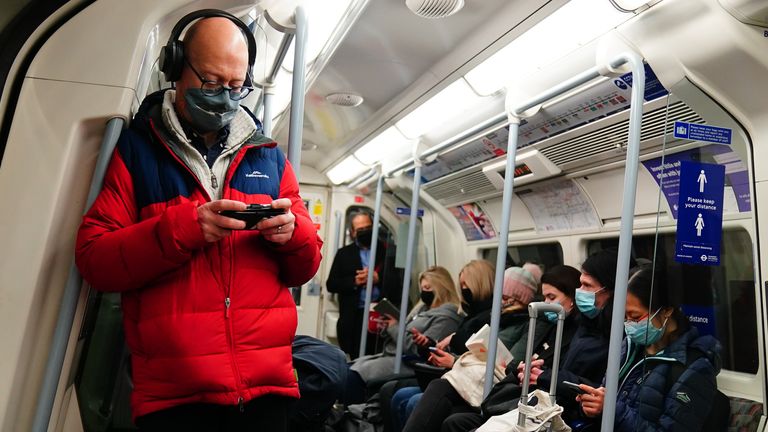One of the greatest attributes to living in an accessible city such as London, is the amazing public transport system. There are 270 tube stations across London, 19,000 bus stops, and 800 buses running daily. The underground travels 5 million people to their destinations every day. (tfl 2023). London was even placed 10th in the world for best public transport services. This is an amazing thing for students and workers who rely on this transport to get to work and school. While we are all in a rush to get to where we need to be, have we ever stopped to consider the potential risk these services could pose to our health?
The potential risk
100% of London’s residents live where the air pollution is higher than what is recommended by the World Health Organization. (Shukla 2022). And the tube is the most polluted part of the whole city. There are tons of different particles that get trapped in the underground air. These particles include typical things such as skin and hair particles from passengers. However, the most harmful particles include maghemite and metals from the tube itself. Everytime the tube uses the brakes, these tiny particles are released into the air. “Inhaling such particles leads to a wide range of harmful health conditions related to heart disease, stroke, lung cancer, and other respiratory infections. Air pollution has also been linked to infertility and infant mortality. This major environmental issue contributes to an average of 9,000 premature deaths every year and costs London’s healthcare system between £1.4 and £3.7 billion (US$1.6 – 4.3 billion) per year.” (Shukla 2022).
Is there a solution?
While this is a concerning thing to be aware of, the real question is how can we avoid these health risks? People cannot simply stop using the extremely convenient public transport in London. Luckily, TFL is aware of these hazardous particles and have been taking steps to eliminate them. Some of the things they are doing to tackle this issue is cleaning the tunnels more often, using better ventilation systems, and potentially using electrostatic filters. These filters can catch the harmful particles in the air. Another option is to wear a face mask which will provide protection against these particles.

Overall, these facts are concerning for the daily commuters of London. However, using public transport is still better for your health than traveling by car. When driving, these pollutants from your vehicle build up within the air inside your car. So, while it is very hard to completely eliminate the health risks from transportation, it is helpful to become aware of the potential health risks to take the precautions that are right for you.
References
Admin, O. (2020). Hazardous Dust in the London Underground | VODEX Ltd. [online] Vodex. Available at: https://www.vodex.co.uk/blog/hazardous-dust-in-the-london-underground/ [Accessed 1 Jan. 2024].
Aldred, L. (n.d.). Does London have good public transport? [online] Sanctuary Personnel. Available at: https://www.sanctuarypersonnel.com/blog/2020/02/does-london-have-good-public-transport?source=google.com. [Accessed 1 Jan. 2024]
Shukla, N. (2022). 5 Environmental Problems in London in 2022. [online] Earth.org. Available at: https://earth.org/environmental-problems-in-london/. [Accessed 1 Jan. 2024]
TfL Bus Stop Locations and Routes – London Datastore. [online] Available at: https://data.london.gov.uk/dataset/tfl-bus-stop-locations-and-routes#:~:text=TfL. [Accessed 2 Jan. 2024]
Lim, S. (2019). Drivers are exposed to the highest levels of harmful air pollution — and taxi drivers are most at risk. [online] AirQualityNews. Available at: https://airqualitynews.com/uncategorised/drivers-are-exposed-to-the-highest-levels-of-harmful-air-pollution-and-taxi-drivers-are-most-at-risk/ [Accessed 5 Jan. 2024].
Matters, T. for L. | E.J. (n.d.). What we do. [online] www.tfl.gov.uk. Available at: https://tfl.gov.uk/corporate/about-tfl/what-we-do#:~:text=LondonUndergroundbetterknownas. [Accessed 2 Jan. 2024]
Nast, C. (n.d.). The Tube has a massive dust problem. But TfL has a plan to fix it. [online] Wired UK. Available at: https://www.wired.co.uk/article/london-tube-dust. [Accessed 2 Jan. 2024]
